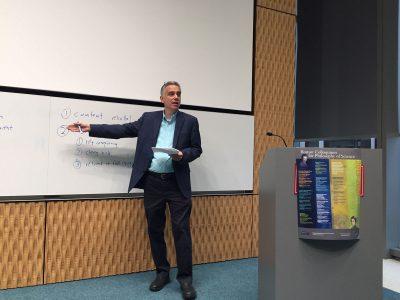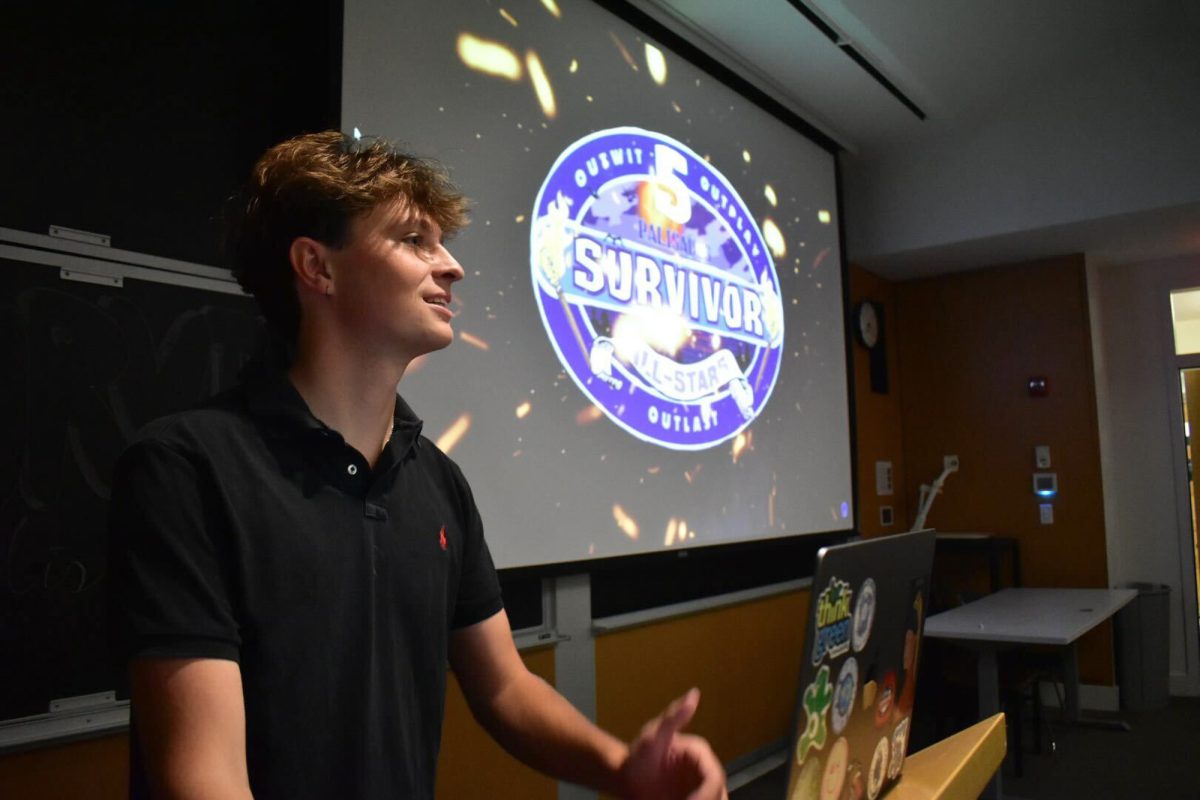He stood alone among 600 deniers at the Flat Earther Convention in Denver in November 2018. He listened to all they had to say — all of the evidence and experiments presented by individuals in lab coats. On the second day of the conference, he came out and tried to engage them in conversations, catching them in their own contradictions.

Lee McIntyre, a research fellow at the Center for Philosophy & History of Science at Boston University, said in a talk Friday that his tactics in trying to convince the flat earthers at the convention they were wrong were ineffective.
“These people were serious, they actually believed this,” McIntyre said in the talk. “[But] their beliefs aren’t based on evidence.”
Friday’s event, “Managing Misinformation About Science,” part of the Boston Colloquium for Philosophy of Science lecture series hosted by CPHS, welcomed five speakers from around the world to discuss their research in misinformation and ways to ensure the spread of truths in a post-truth era.
McIntyre described the two rebuttal tactics used by science deniers. The first, content rebuttal, is claiming a supported scientific fact isn’t true, despite evidence. But he said deniers often have false evidence they use to back these claims.
“If you’re going to do content rebuttal, you better not underestimate your opponent,” McIntyre said. “Sometimes they are extremely well-read on the most arcane bulls–t things.”
The second tactic is called technique rebuttal and uses one of five strategies. Deniers rely on conspiracy theories, fake experts and illogical reasoning, McIntyre said, as well as insisting evidence must be 100 percent perfect and cherry-picking evidence.
Cherry-picking is the selection of outlier data points that suggest the opposite of the overall claim, such as pulling two years where global temperatures dipped, despite the overall trend being an increase in temperatures.
“If you could study these five techniques and become fairly expert at it, you could fight back quite effectively,” McIntyre said.
While many people think the best way to fight science denial is to not say anything at all, McIntyre said the most effective solution is reaching out directly and presenting evidence face-to-face within the context of a trusting relationship.
“This may not work, it’s hard to do,” McIntyre said. “But if anything’s going to work, engagement is going to.”
However, by the backfire effect, McIntyre said, when presented with evidence, science deniers can sometimes reassert their beliefs.
“If I present them with facts and present them with evidence, not only am I not going to change their mind, I’m going to cause them to double down on their belief,” McIntyre said. “They will hold their beliefs even more strongly than before you presented the information.”
Quassim Cassam, a philosophy professor at the University of Warwick, U.K., who also spoke at the event, said in an interview that in recent years, issues like climate change have become highly political, though they shouldn’t be.
“What appears to be factual questions have turned into matters of opinions,” Cassam said. “It’s all how you interpret the facts, even though these are not matters of opinion at all.”
Cassam said there is a political motivation for denying climate change and said deniers think scientists are part of a leftist conspiracy to regulate free markets
“Why would anyone want to pose a hoax to extend the power of the state?” Cassam asked.
Stephan Lewandowsky, a cognitive psychologist at the University of Bristol, U.K., discussed in his talk the motivations deniers have in contradicting fact.
“At the overarching level of political effectiveness … the underlying common theme to any denial is avoid cuts in greenhouse emissions,” Lewandowsky said. “So long as the public does not demand policy action, they win.”
Aside from the indisputable evidence of warming global temperatures as recorded since 1880, Lewandowsky showed President Donald Trump’s Twitter account on the slideshow, acknowledging another climate challenge.
“Random tweets by the tweeter-in-chief, where he is effectively saying that global warming is just a conspiracy,” Lewandowsky said, “I think he’s tweeted that 40 or 50 times.”
In engaging science deniers in debates, McIntyre said he believes the audience is exposed to both truth and misinformation.
“By presenting a debate … introducing misinformation,” McIntyre said, “[You are] presenting the other side by presenting the debate.”
Giving the deniers the same media time and coverage as those speaking the actual truth, McIntyre said, is a problem.
“They finally realized they’re hurting people,” McIntyre said. “They thought that it was objective to show both sides of the debate … It’s giving the truth and the liar equal time.”
Cassam said this “extremely corrosive” problem arises because journalists uphold impartiality.
“[The media has] the responsibility to actually accurately represent the state of knowledge,” Cassam said. “If 99.9 percent of scientists think climate change is real, it’s absurd to say the balance requires giving 50-50 time to each.”
Aja Watkins, a graduate student of philosophy at BU, said it is important to define what misinformation is before determining the best approach in solving the problem.
“I think the main question is whether there’s any role here for centralized authority,” Watkins said. “Or whether some laissez faire approach is the best way.”
























































































































